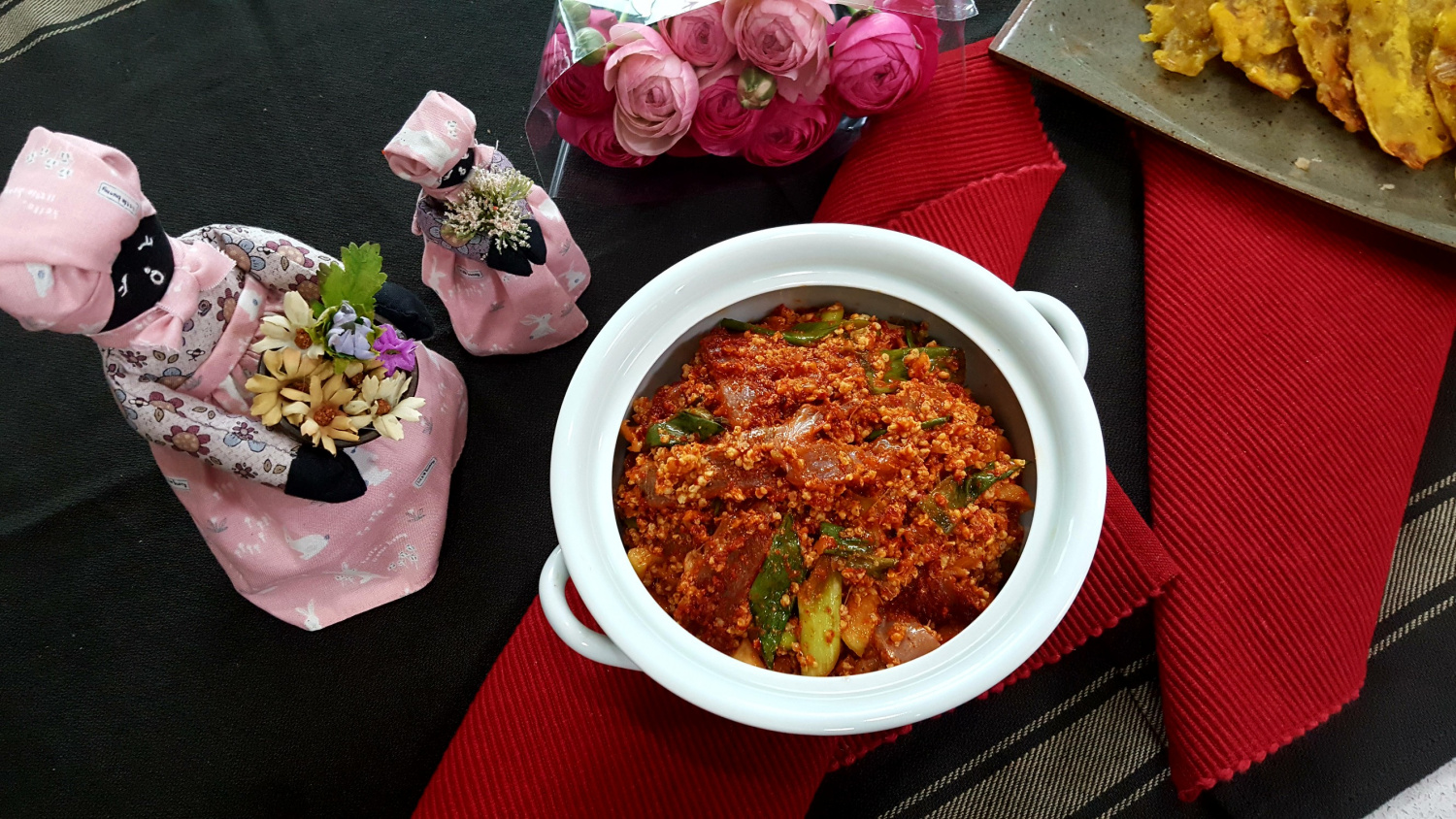A Winter Delicacy: Fermented Flounder (Gajami Sikhye) Recipe
Special Fermented Flounder Side Dish Made with Winter Flounder

Craft a ‘Gajami Sikhye,’ a fermented flounder dish, using plump and fresh winter flounder. This delicacy boasts a deep, rich flavor and abundant nutrients. Its savory and slightly sour fermented taste is so addictive it’ll make you devour a bowl of rice in no time! It’s perfect for entertaining guests or as a delicious preserved side dish to enjoy over time.
Main Ingredients- 10 fresh flounders
- 2 cups glutinous millet
- Suitable amount of fine malt powder
- 1/2 medium radish
- 4 medium green onions
Seasoning & Other Ingredients- 1.5 cups red pepper flakes (adjust spice level)
- 2 Tbsp Cheongyang red pepper flakes (for extra heat)
- 2 Tbsp minced fresh ginger
- 5 Tbsp minced garlic
- 1.5 cups red pepper flakes (adjust spice level)
- 2 Tbsp Cheongyang red pepper flakes (for extra heat)
- 2 Tbsp minced fresh ginger
- 5 Tbsp minced garlic
Cooking Instructions
Step 1
First, scrape off the scales from the flounder using the back of a knife. Neatly trim the fins and tail. Make a cut along the belly to remove the innards thoroughly. Rinse the flounder multiple times under running water until completely clean. Drain the water from the fish and place it in a colander. Generously sprinkle coarse sea salt all over and rub it in to salt the fish evenly. Let it sit overnight to draw out moisture and season the flounder.

Step 2
Do not wash the flounder that was salted overnight. Spread the fish on a drying rack in a single layer in a shaded, well-ventilated area. Let it dry until it becomes slightly chewy and firm for two days. Be careful not to over-dry it, as it might crumble. The ideal texture is slightly firm to the touch. This step significantly improves the final texture of the sikhye.

Step 3
Now, let’s prepare the other ingredients. Peel the radish and cut it into thick slices, about 0.5 cm thick. Sprinkle coarse sea salt over the julienned radish and let it sit for about 30 minutes. Squeeze out the excess water firmly with your hands. Peel and finely mince the garlic and ginger. Sift the malt powder through a fine sieve. Wash the green onions and cut them into 5 cm lengths. Rinse the glutinous millet several times until the water runs clear, then soak it in water for about half a day. Drain the soaked millet and cook it into fluffy rice, then let it cool completely. Finally, cut the dried, chewy flounder into large, diagonal pieces for easy eating.

Step 4
In a large bowl, combine the prepared flounder, red pepper flakes, minced ginger, and minced garlic. Gently mix them together so the seasoning evenly coats the fish. Coating the fish with the red seasoning first will result in a more vibrant color when you add the radish later.

Step 5
Once the seasoning has coated the flounder, add the squeezed radish juliennes. Add a bit more red pepper flakes and gently mix to color the radish beautifully. Mix carefully to avoid breaking the radish and flounder.

Step 6
Now, add the cooked millet rice and malt powder for fermentation. Add the completely cooled millet rice, sea salt, minced garlic, and minced ginger to the bowl. Sprinkle the finely sifted malt powder evenly over the mixture. Gently mix with your hands to ensure the rice grains don’t clump and the malt is distributed throughout. The enzymes in the malt will help break down the rice and add flavor.

Step 7
Taste the mixture and adjust the seasoning if needed with fish sauce (like ‘aekjeot’). Since Gajami Sikhye requires a long fermentation time, it’s best to season it a bit on the milder side initially. The flavor will deepen during fermentation, so avoid making it too salty. Add the chopped green onions and gently mix to finish. (Tip: Using ‘jo’ rice instead of millet rice is said to help reduce sodium intake due to the rich potassium and fiber content in ‘jo’.)

Step 8
Transfer the well-mixed Gajami Sikhye into a fermentation crock or clean glass jars. Avoid filling them completely; leave some space. Cover and let it ferment at room temperature for two days. After that, store it in a kimchi refrigerator or a regular refrigerator for about a week to further mature the flavors and soften the texture. Serve the fermented Gajami Sikhye in small portions.

Step 9
This is what the Gajami Sikhye looks like after two days of fermentation at room temperature. Some fermentation will have begun, emitting a characteristic fragrant aroma, and the seasoning will have penetrated deeper into the ingredients.

Step 10
Well-fermented Gajami Sikhye becomes tender enough to eat the bones. The flounder bones are rich in calcium, so consuming them whole provides an effective way to supplement your body’s calcium needs. It’s an excellent winter delicacy that offers both health benefits and delicious taste.



